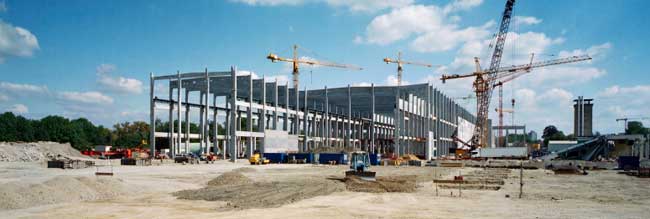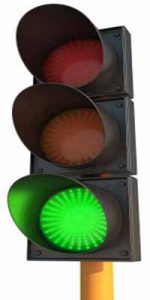The Environment of Successful Building Part III: The Bond
 The natural process of construction? What’s natural about erecting a structure? Many buildings may not be natural, but building with concrete is natural. In fact, the moisture content levels in concrete form the core of successful building. Mess with the natural process of moisture in these situations, and you risk your own building project.
The natural process of construction? What’s natural about erecting a structure? Many buildings may not be natural, but building with concrete is natural. In fact, the moisture content levels in concrete form the core of successful building. Mess with the natural process of moisture in these situations, and you risk your own building project.
Concrete Moisture
Concrete’s ingredients form a natural process of bonding. Once poured, concrete slabs hold moisture in varying degrees. In fact, installers must regularly assess moisture so concrete’s ingredients can appropriately hydrate (or cure).
Contractors are then pressured by time. However, our temptation to hurry poses a major safety risk. In addition to hydration, concrete must dry. Its water vapors must rise from the bottom of the slab to evaporate from its surface. Only when moisture levels (RH%) in the concrete begin to lower can contractors safely consider moving on to the next phase of construction.
 What to do in the meantime? Moisture measurement through relative humidity (RH) testing. RH testing provides a way for people to assess the natural process of moisture migration in concrete. Continuously check the moisture levels (RH%) in various locations at 40 percent of slab depth. When the slab reaches a safe RH % level, based on adhesive and flooring manufacturers recommendations, pull the trigger and move on.
What to do in the meantime? Moisture measurement through relative humidity (RH) testing. RH testing provides a way for people to assess the natural process of moisture migration in concrete. Continuously check the moisture levels (RH%) in various locations at 40 percent of slab depth. When the slab reaches a safe RH % level, based on adhesive and flooring manufacturers recommendations, pull the trigger and move on.
Equilibration
Successful flooring installation depends entirely on achieving equilibrium moisture content (EMC) before floor coverings can be successfully added. Concrete absorbs and releases water vapors based on changes in surrounding relative humidity (RH) and temperature. This natural process of moisture migration must occur before concrete can achieve EMC. Changes in RH simply alter the timing of that natural process.
Successful installers know that the cost of waiting for equilibrium moisture content outweighs the short-term benefits of rushing it. In fact, flooring failure is often caused by contractors who pull the trigger on moisture content before its time.
Measurement
 Moisture measurement has become an excellent technological way for humans to work with the natural process of concrete drying. Wagner Meters provide relative humidity testing which instantly and accurately assess moisture content by percentage. Concrete builders install single-use probes which feed moisture content data to a hand-held meter. Wagner has developed a wide range of products to provide immediate moisture measurement results. Equilibrium moisture content is a contractor’s prime objective when it comes to moisture content in concrete construction.
Moisture measurement has become an excellent technological way for humans to work with the natural process of concrete drying. Wagner Meters provide relative humidity testing which instantly and accurately assess moisture content by percentage. Concrete builders install single-use probes which feed moisture content data to a hand-held meter. Wagner has developed a wide range of products to provide immediate moisture measurement results. Equilibrium moisture content is a contractor’s prime objective when it comes to moisture content in concrete construction.
The Trigger Moment
Today’s instant savings can form tomorrow fiscal nightmare. Moisture measurement is a simple, cost-effective way to get it right so you don’t have to do it again. Equilibrium moisture content is the trigger that fires you into the next phase in successful construction.
Additional Reading:
The Environment of Successful Building Part I: The Envelope
The Environment of Successful Building Part II: The Installation
The Environment of Successful Building Part IV: The Integrity